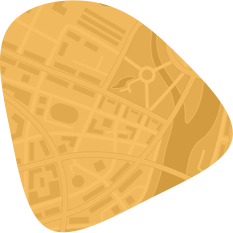
Whether you're an athlete, an active professional, or someone dealing with age-related joint issues, elbow injuries can disrupt your daily routine. Simple movements such as lifting a bag, gripping a pen, or reaching overhead can become difficult and frustrating. When rest, physical therapy, and medications no longer provide relief, elbow arthroscopy might be the answer you need.
This minimally invasive procedure allows doctors to look inside your elbow joint and treat the source of your pain. It’s designed to relieve discomfort, restore movement, and get you back to doing what you love without the lengthy recovery that comes with traditional open surgery.
How do I know if I need elbow arthroscopy?
Athletes who rely on repetitive arm motions (e.g., tennis players and pitchers) often benefit from arthroscopy. However, elbow arthroscopy isn't just for professional athletes. It’s for anyone struggling with pain, stiffness, or limited motion in the elbow. It’s also helpful for people dealing with arthritis, old injuries, or overuse from daily activities. If you're tired of living with discomfort or have tried nonsurgical treatments without success, this procedure could offer real relief.
You might be a good candidate if you experience any of the following symptoms:
- Ongoing pain or stiffness that restricts your arm’s movement.
- Damage to the cartilage, tendons, or ligaments in your elbow.
- Swelling, instability, or loss of strength in your arm.
What types of injuries and conditions does elbow arthroscopy treat?
Elbow arthroscopy is a versatile procedure that treats many conditions and injuries, often with faster recovery and less pain than traditional surgery. By targeting the root cause of your elbow pain, this procedure helps restore comfort and function so you can return to your normal activities. Doctors use it to treat:
- Infections: Removing infected tissue can help relieve pain and swelling caused by septic arthritis.
- Inflammation: Chronic joint inflammation, such as synovitis, can be reduced by removing inflamed tissue.
- Arthritis: While arthroscopy can’t cure osteoarthritis or rheumatoid arthritis, it can smooth damaged joint surfaces to ease pain.
- Loose bone or cartilage: Surgeons can remove loose fragments that cause joint irritation, often seen in osteochondritis dissecans.
- Scar tissue: Tight tissues (adhesions or contractures) can be released to improve mobility.
- Sports injuries: Overuse injuries such as tennis elbow and pitcher’s elbow often respond well to this procedure.
- Fractures and dislocations: Arthroscopy can help repair soft tissue damage after a break or dislocation.
What happens during elbow arthroscopy?
The procedure is typically done as an outpatient surgery, so you'll be able to go home the same day. Before the surgery, your doctor might order imaging tests such as an MRI, CT scan, or X-ray to get a detailed view of your elbow. It’s important to let your doctor know about any medications, vitamins, or supplements you're taking, especially blood thinners or anti-inflammatory drugs.
During surgery, you'll receive anesthesia to keep you comfortable. Once you're asleep, the surgeon will gently fill your elbow joint with sterile saline fluid to create space and protect nearby tissues. Small incisions are made for inserting specialized instruments, including an arthroscope, a thin, flexible tube with a camera and light. This gives the surgeon a clear view inside your elbow. Depending on what’s needed, the surgeon can remove damaged tissue, repair tendons or ligaments, or smooth joint surfaces.
Once the procedure is complete, the surgeon will close the tiny incisions with stitches or staples and protect the area with a bandage or splint. You’ll then stay in recovery for a short time before heading home.
What should I expect during my elbow recovery?
Recovering from elbow arthroscopy is usually faster and less painful than healing from open surgery, but it still requires care and patience. Here’s what you can expect as you heal:
- Managing pain: Your doctor may recommend icing your elbow and keeping it elevated to reduce swelling. Over-the-counter medications such as ibuprofen can help ease discomfort.
- Caring for your incisions: Keep your incision sites clean and dry. Showers are fine, but avoid baths until your doctor says it’s safe.
- Using a support device: You might need a sling, splint, or brace to protect your elbow as it heals.
- Starting physical therapy: Gentle exercises can help prevent stiffness and rebuild strength. Your doctor may recommend physical therapy to speed up recovery.
What are the risks of elbow arthroscopy?
Like any surgery, elbow arthroscopy carries some risks. However, complications are rare. The elbow is a small, complex joint with many important nerves and blood vessels, so the procedure requires precision. Possible risks include:
- Reactions to anesthesia.
- Blood clots (including deep vein thrombosis).
- Damage to surrounding tissues or nerves.
- Excessive bleeding or swelling.
- Infection at the incision sites.
- Nerve irritation or injury.
When should I see a bone doctor?
If you’re struggling with elbow pain or recovering from an injury, you shouldn’t have to wait for answers or relief. Ignoring elbow pain can lead to bigger problems down the road. The longer you wait, the more likely the issue will worsen and make recovery harder. Elbow arthroscopy offers a chance to address the problem early, relieve pain, and prevent long-term damage.
At Island Musculoskeletal Care (IMC Bone Doc), our experienced orthopedic surgeons are here to help you heal and regain your strength. With decades of combined experience and advanced, minimally invasive treatments, we’re dedicated to finding the right solution for you. We’ll explain every step of your care in plain, straightforward language so you feel comfortable and confident throughout your recovery.
We offer immediate and same-day appointments at any of our seven convenient locations across New York City and Long Island. Our cutting-edge facilities are equipped with the latest diagnostic tools, so we can quickly identify the problem and start your treatment. We work with most insurance plans, including no-fault and workers’ compensation, which may cover your entire treatment.
Don’t let elbow pain hold you back. Contact IMC Bone Doc to schedule your appointment today and take the first step toward feeling better.
"Dr. Jupiter was very thorough in assisting me with my condition. He assigned other tests to help me understand my injury and him and his staff were professional during the entire process." – R.H., ⭐⭐⭐⭐⭐






















